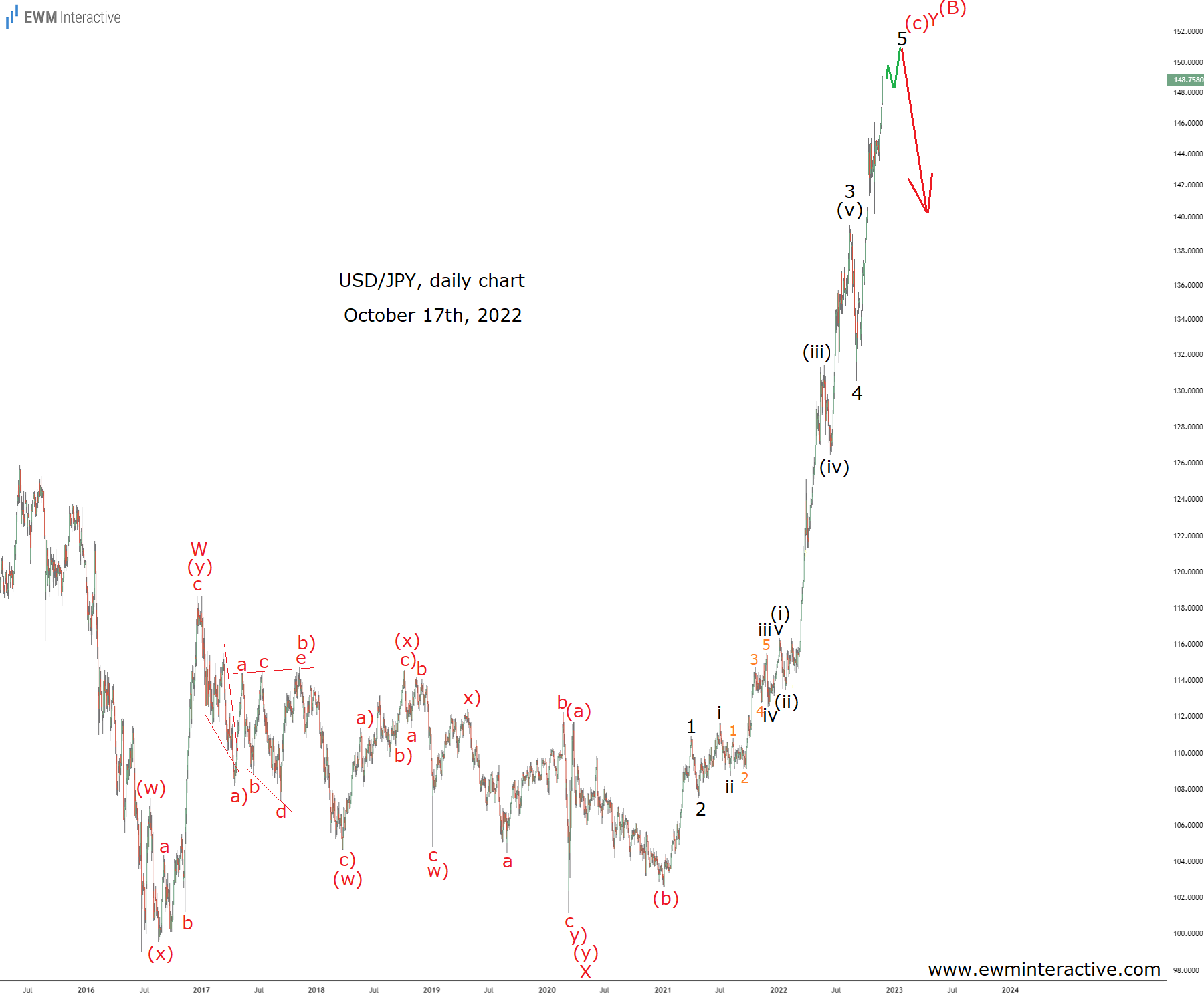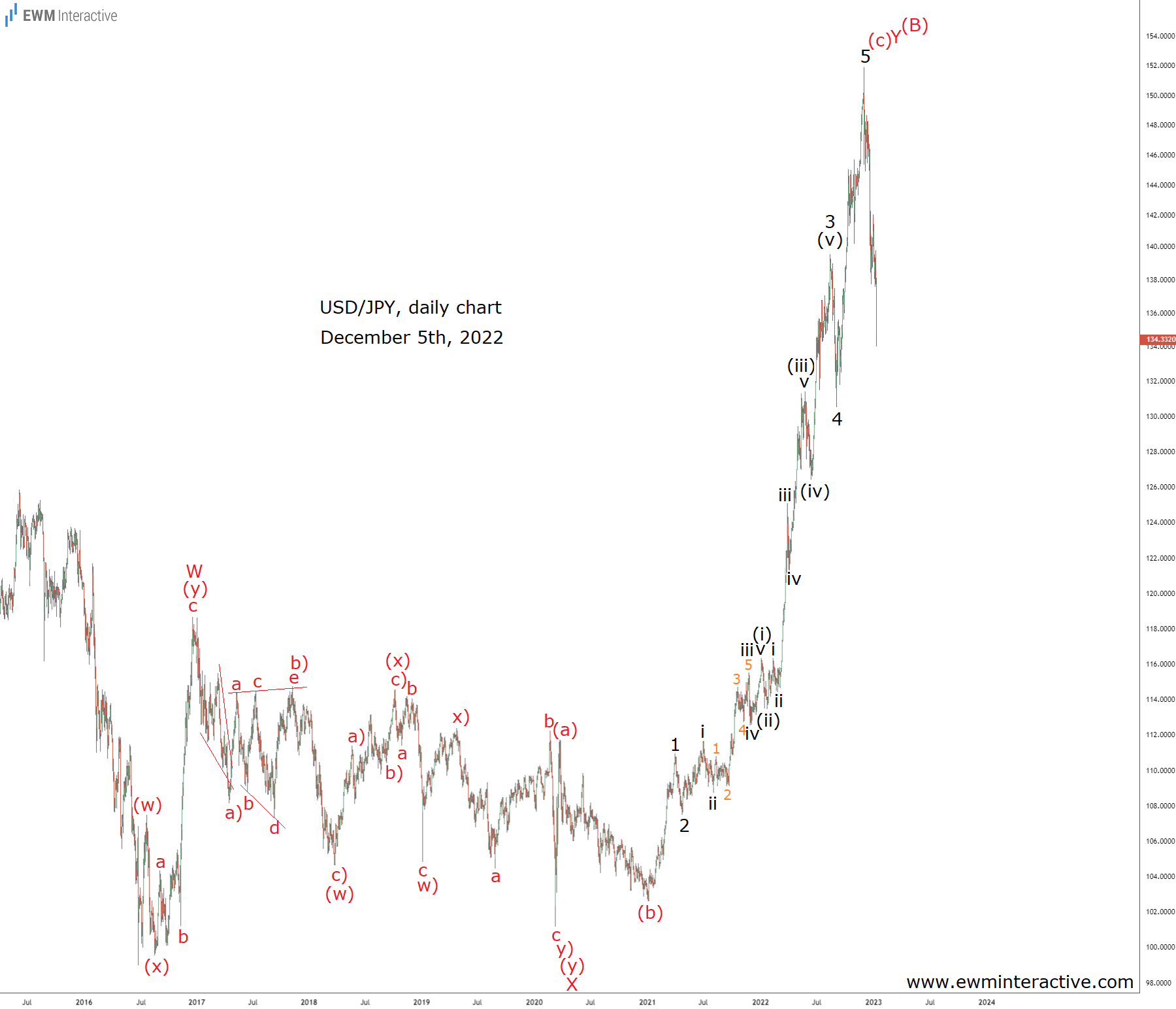USD/JPY surged sharply in 2021 but has been skyrocketing in 2022. The pair started this year at 115.11 in January. Ten months later, in October, it was trading in the vicinity of 152.00. Given the Fed’s aggressive rate hikes and the BOJ’s stubbornly loose monetary policy, there was hardly any reason to expect a trend reversal soon.
Except there was, but not where most people would be looking for it. While most economists and market analysts focus on external news and macroeconomic data, USD/JPY has given us a hint on its price charts. The one below was shared with our Elliott Wave PRO subscribers on Oct. 17, when the pair was at 148.76 and still on its way up.

So, we labeled that rally as wave W and thought that whatever comes next must also be corrective in nature. Another (w)-(x)-(y) double zigzag then slowly dragged USD/JPY down to 101.18 during the Covid-19 panic of March 2020. Since it didn’t breach the 2016 bottom of 98.99, it made sense to conclude that another three-wave rally should be expected in wave Y.
No Trend Lasts Forever, and USD/JPY Isn't an Exception
Wave Y could’ve ended anywhere above the top of wave W at 118.67. Instead of slowing down after exceeding this mark, however, the bulls only grew stronger. However, this didn’t change the count, only the proportions between the waves. So, while we couldn’t have known where wave Y would end, we knew that no trend lasts forever.
Wave Y was shaping up as a simple (a)-(b)-(c) zigzag. The Elliott Wave theory states that except in triangle corrections, C-waves always develop as either an impulse or an ending diagonal. Here, wave (c) was not a diagonal. The only possibility was that it would be a giant five-wave impulse pattern. By mid-October 2022, we’d already labeled its sub-waves as 1-2-3-4-5, where the structure of wave 3 was also visible.
This meant that once wave 5 was over, the entire 2022 uptrend would also end. Instead of extrapolating the recent past into the future, Elliott Wave analysis had prepared us for a bearish reversal near the 150.00 mark. That’s exactly what happened just a few days later.

USD/JPY climbed to 151.95 on Oct. 21, 2022. The following month and a half went entirely under the bears’ dictation. On Dec. 2, the pair fell to 133.62, down over 12% from its peak. The Fed is expected to slow the pace of rate hikes going forward as inflation cools, but that’s hardly enough to justify the sharp plunge in USD/JPY.
The good news is that we don’t have to search for an explanation for why this or that happened after the fact. As traders, we have to stay ahead of the curve, not look in the rearview mirror. That’s what Elliott Wave analysis helped us to do with USD/JPY in October. How low can the bears go from here? The weekly chart is giving us a hint already.
